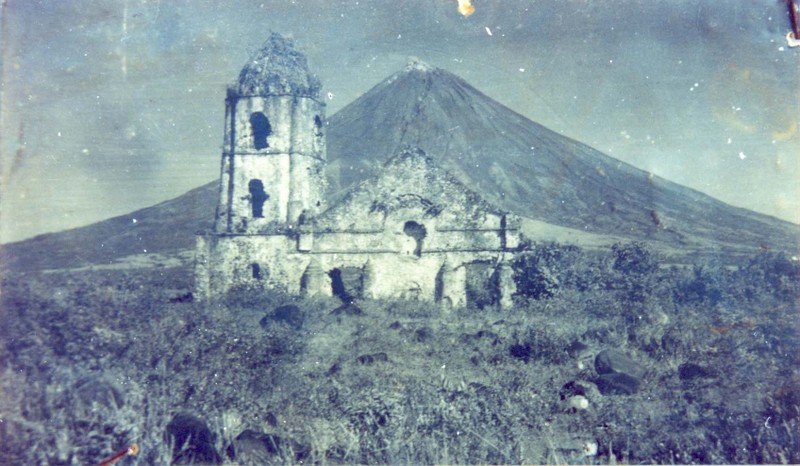Afternoon at the Cagsawa Ruins
.jpg) |
| December Afternoon at the Cagsawa Ruins. Acrylic on Canvas. 24" x 30". work in progress. |
I wanted to make the image different from other Cagsawa ruins photos and paintings by showing a little more of the sight-seeing adults and some young people who don't seem to show interest in the place at all. It also shows how trees and vegetation around the site grew since the place was stripped bare by typhoon Reming in 2006 (click to view photos of the typhoon's aftermath from a youtube channel).
The painting also shows a portion of the church's ruined facade. Most images of Cagsawa only show the belfry, missing out on the other interesting features of the site like the ruined walls towards the right. I have a friend taking up a post-graduate degree on Archaeology (wrote about it in this post) and she mentioned that the locals are against efforts to dig this potentially rich archaeological site.
Stories about the great 1814 Mt. Mayon eruption have it that 1,500 people died in the church when they sought refuge there. I also heard that the exposed portion of the ruined walls are those of the second level already. An archaeological dig could confirm the number of those who really perished, along with the possibility of unearthing more information about how the people lived during the time in the same way that the Mt. Vesuvius eruption buried Pompeii in AD 79.
 |
| Human form cast after getting buried in ash during the Mt. Vesuvius eruption in AD 79. Image from bbc.co.uk. |
 |
One of only two old
photographs I've seen from the internet with the facade still standing.
|
Art as I believe and have posted here serves a lot of purposes from simply expressing joy and beauty to reminding us of our past and helping us advocate change and development for the future.
So there, I finally have two things to show for myself -- one blog post and a near-finished painting. My Christmas break has been productive after all.
--------------------------------------------------
Update May 2013: Link to Ambeth Ocampo's article on historical accounts of the 1814 Mayon volcano eruption.
.







Post a Comment